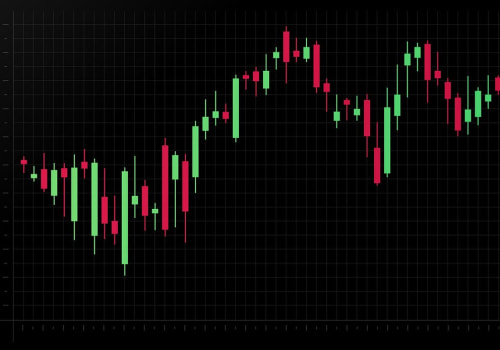Forex trading, also known as foreign exchange trading, involves buying and selling currencies to make a profit from the fluctuations in their exchange rates. While forex trading can be highly rewarding, it is also accompanied by inherent risks. One way to manage these risks is through a practice called hedging. In this comprehensive guide, we will explore the concept of hedging in Forex and its importance in risk management. Forex, also known as foreign exchange, is the global marketplace for trading currencies. Hedging is a strategy used by traders and investors to mitigate risks associated with currency fluctuations. This guide aims to provide a thorough understanding of hedging in Forex and equip you with the knowledge to make informed decisions in your trading activities.
Understanding Hedging in Forex
Hedging in forex refers to taking positions in the market to offset potential losses in other positions. It is a risk management technique that helps traders protect their investments from adverse market movements. By hedging, traders aim to minimize losses and secure their capital in volatile market conditions. Forex hedging refers to the practice of opening additional positions in the Forex market to offset potential losses in existing positions. By employing hedging strategies, traders aim to protect their portfolios from adverse currency movements. Hedging allows traders to minimize risk exposure and safeguard their investments against market volatility.
Hedging can be compared to purchasing insurance for your investments. Just like insurance provides protection against unforeseen events, hedging allows traders to safeguard their positions against potential losses.
The Importance of Hedging in Forex
Hedging plays a vital role in Forex trading due to the unpredictable nature of currency markets. It allows traders to safeguard their positions and manage potential risks effectively. The key benefits of hedging in Forex include:
Minimizing losses during market downturns
Providing stability to investment portfolios
Protecting against currency fluctuations
Allowing traders to focus on long-term goals
Why Hedge in Forex?
Hedging in Forex offers several benefits to market participants. By hedging their positions, traders can reduce the impact of currency fluctuations on their portfolios. It provides a level of insurance against unexpected market events, minimizing potential losses. Additionally, hedging allows traders to maintain their exposure to specific currencies while managing the associated risks effectively.
Popular Hedging Strategies
Direct Hedging: Direct hedging involves opening two opposing positions simultaneously. For example, if a trader holds a long position on a currency pair, they would open a short position on the same currency pair to hedge against potential losses. This strategy ensures that any losses incurred in one position are offset by gains in the other.
Multiple Currency Pairs Hedging: This strategy involves hedging multiple currency pairs to diversify the risk. Traders identify positively correlated currency pairs and take opposing positions in them. By doing so, they aim to balance out potential losses and reduce the overall risk exposure. Traders can hedge their positions by utilizing multiple currency pairs that have a negative correlation. By taking opposite positions on two currency pairs, traders can offset potential losses and reduce overall risk exposure.
Options Hedging: Options hedging involves using financial derivatives called options contracts to hedge forex positions. Options give traders the right, but not the obligation, to buy or sell a specific currency pair at a predetermined price within a certain timeframe. By utilizing options contracts, traders can protect their positions from unfavorable market movements while still participating in potential profits. Options contracts offer traders the flexibility to hedge their positions effectively. By purchasing put options, traders can protect against downside risk, while call options allow them to hedge against potential losses on the upside.
Forward Contracts A forward contract is an agreement between two parties to buy or sell a currency at a predetermined price on a future date. This strategy allows traders to lock in exchange rates, protecting them from unfavorable movements in the currency market.
Currency swaps involve the exchange of principal and interest payments between two parties in different currencies. This strategy allows traders to hedge against interest rate risks and exchange rate fluctuations.
Money market instruments, such as Treasury bills and commercial paper, provide short-term investment options for hedging purposes. These instruments offer liquidity and stability to traders seeking to protect their portfolios.
Benefits of Hedging in Forex
Risk Mitigation: Hedging provides a safeguard against potential losses, allowing traders to manage their risk exposure effectively. It acts as a protective shield, particularly in volatile market conditions, helping traders avoid significant financial setbacks.
Increased Flexibility: Hedging gives traders the freedom to explore different trading strategies and take more calculated risks. By protecting their positions, traders can experiment with different approaches and adapt to changing market conditions without the fear of substantial losses.
Capital Preservation: Hedging helps preserve capital by minimizing losses. Instead of experiencing substantial drawdowns, traders can limit their downside and protect their initial investment. This allows for a more sustainable and long-term trading approach.
How to Hedge in Forex
Identify the Risk: Before implementing a hedging strategy, it is crucial to assess the potential risks associated with your positions. Identify the factors that may affect the currency pairs you are trading and determine the level of risk exposure.
Choose an Appropriate Strategy: Based on your risk assessment, select a hedging strategy that aligns with your trading goals and risk tolerance. Whether you opt for direct hedging, multiple currency pairs hedging, or options hedging, ensure that the chosen strategy suits your trading style.
Implement the Hedge: Once you have chosen a strategy, execute the hedge by taking positions that offset potential losses. Monitor your positions regularly and make adjustments as necessary to maintain the desired level of protection.
Regularly Evaluate and Adjust: Forex markets are dynamic, and market conditions can change rapidly. Continuously evaluate your hedging strategy and make adjustments as needed to adapt to evolving market trends.
Futures contracts are standardized agreements to buy or sell a currency at a predetermined price and date. Futures contracts facilitate hedging by allowing traders to lock in future exchange rates.
Pros and Cons of Forex Hedging
5.1. Advantages
Mitigates potential losses during volatile market conditions
Provides stability and security to investment portfolios
Allows traders to focus on long-term strategies
Reduces the impact of adverse currency fluctuations
5.2. Disadvantages
Increased complexity in managing multiple positions
Possibility of limiting profit potential
Requires careful analysis and risk assessment
Potential costs associated with hedging strategies
Best Practices for Effective Forex Hedging
To ensure successful hedging in Forex, traders should consider the following best practices:
Understand the purpose and benefits of hedging
Identify and assess potential risks
Develop a solid risk management plan
Choose appropriate hedging strategies
Monitor and adjust hedging positions as needed
Stay informed about market conditions
Regularly review and update the hedging strategy
Conclusion
Hedging in forex is a valuable risk management tool that allows traders to protect their investments from potential losses. By understanding different hedging strategies and implementing them effectively, traders can minimize risks and improve their overall trading performance. Remember that hedging is not a foolproof strategy, and careful analysis and risk assessment are crucial for success.
What is the purpose of hedging in forex trading?
Hedging in forex trading aims to minimize potential losses by taking positions that offset risks in existing positions. It provides a way for traders to protect their investments in volatile market conditions.
Does hedging guarantee profits in forex trading?
Hedging is not a guaranteed profit-making strategy. It is primarily used for risk management and minimizing losses rather than generating profits. Traders should carefully analyze market conditions and implement hedging strategies based on their risk tolerance and trading goals.
Are there any drawbacks to hedging in forex?
While hedging can protect traders from losses, it can also limit potential gains. Hedging strategies involve costs, such as spreads, commissions, and options premiums, which can eat into profits. Additionally, over-hedging or improper implementation of hedging strategies can lead to missed opportunities and reduced profitability.
Can individuals without extensive trading experience use hedging strategies?
Yes, individuals without extensive trading experience can use hedging strategies in forex trading. However, it is essential to gain a solid understanding of the different hedging techniques and carefully evaluate market conditions before implementing a hedging strategy. Seeking guidance from experienced traders or financial advisors can also be beneficial.
Is hedging applicable only to large forex traders?
No, hedging is applicable to traders of all sizes. Both individual retail traders and institutional traders can utilize hedging strategies to manage their risk exposure in forex trading. The choice of hedging strategy may vary based on the trader's capital, risk tolerance, and trading goals.
Is Forex hedging suitable for all traders?
Forex hedging is not suitable for all traders and depends on individual trading goals, risk tolerance, and market conditions.
How do forward contracts work in Forex hedging?
Forward contracts allow traders to lock in a future exchange rate for a specific currency pair, reducing the risk of adverse price movements.
Can hedging eliminate all risks in Forex trading?
Hedging can mitigate risks but cannot eliminate them entirely. It helps manage and reduce potential losses but does not guarantee profit.
Are there any disadvantages to Forex hedging?
Forex hedging can increase complexity, limit profit potential, and incur costs associated with implementing and maintaining hedging strategies.
What are the best hedging strategies for beginners?
Beginners in Forex hedging should start with simple strategies like using options contracts or diversifying their portfolios across multiple currency pairs.
How does hedging impact profit potential in Forex trading?
Hedging can limit profit potential as it focuses on risk management rather than maximizing gains. However, it provides stability and protects against losses.
Are there any alternatives to hedging in Forex?
Alternative risk management techniques in Forex include using stop-loss orders, trailing stops, and position sizing strategies.
What are the key factors to consider when hedging in Forex?
Key factors to consider when hedging in Forex include currency correlation, market conditions, risk appetite, and hedging costs.
How can I develop a solid risk management plan in Forex?
To develop a solid risk management plan, assess your risk tolerance, set clear goals, diversify your portfolio, and regularly review and adjust your strategies.
Remember to consult with a professional financial advisor before implementing any trading or investment strategies.
By implementing effective hedging strategies, forex traders can safeguard their investments, reduce risks, and navigate the dynamic foreign exchange market with confidence. Start exploring hedging techniques today and take control of your trading journey. Hedging in Forex is a vital risk management technique that helps traders protect their investments from adverse price movements. By understanding the different hedging strategies, evaluating risks, and implementing best practices, traders can navigate the currency market more effectively and increase their chances of success.












Leave Reply